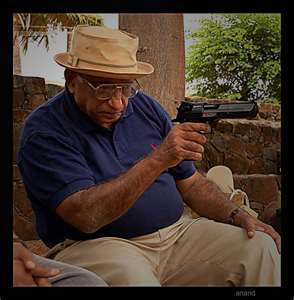
Who is this Man?
Who is behind the killings of Zetas — another drug gang or agents acting on behalf of the government or military? An ad hoc group whose presence is being tolerated by authorities as well as the public?
Coastal Veracruz, the gateway to Mexico for centuries of immigrants from Europe and beyond, a laid-back beachfront vacation spot for legions of Mexicans, has in recent months become the latest state to be thoroughly sucked into the deadly and devastating drug war.
On Sept. 20, nearly three dozen half-naked bodies were dumped in broad daylight on a busy highway underpass in a well-to-do tourist area of the city of Veracruz. Fourteen more turned up a few days later — during a convention of the nation’s top state and federal prosecutors. Then, on Oct. 6, barely 48 hours after announcing a major security offensive, military and police found an additional 36 bodies, and 10 more turned up the following day.
In videotaped presentations, a group of masked men with military bearing has claimed responsibility for the spate of killings, portraying it as a cleansing operation. Many of the bodies had a “Z” for Zeta written on the back with ink marker, a witness said.
The mystery group announced that it was in Veracruz State as “the armed branch of the people, and for the people.”
“We are asking officials and authorities who support the Zetas to stop doing so, and let the armed forces know that our only objective is to finish the Zetas,” the spokesman for the group told the camera. “We are anonymous warriors, without faces, proudly Mexican.”
For years with the Zetas tightly in charge, and the public terrified into submission, the state had stayed relatively calm. But months ago, traffickers associated with top drug lord Joaquin “El Chapo” Guzman are believed to have moved in from the north with an eye toward seizing territory from the Zetas, who had long controlled Veracruz’s valuable routes for smuggling drugs, migrants and contraband.
The “Zeta killers” burst on to the scene shortly before President Felipe Calderon deployed fresh military forces into Veracruz this month.
Their sudden rise and the surgical precision with which the killers systematically picked off nearly 100 people in 17 days has led to conjecture among some people that they may be operating with implicit or direct support of the government or military. Some suggest that the June kidnapping, torture and killing of three marine cadets in Veracruz might have propelled the marine corps to begin acting outside the law. Officials dismiss such speculation, and others wonder why a group aspiring to be a clandestine death squad would post videos on YouTube.
Indeed, some point to Guzman’s Sinaloa network, and say the military look to the killings may be an attempt to deflect attention.
If that’s true, the Zeta killers would simply be the latest of the many cartel-affiliated paramilitary gangs that have been fighting in Mexico since the beginning of the offensive that Calderon launched against the cartels at the start of his administration nearly five years ago.
The Zetas themselves started as the private military arm of the Gulf cartel, hired gunmen recruited from army elite forces to fight and kill the cartel’s enemies. They evolved into a full-fledged trafficking cartel after splitting violently from their former patrons.
Vigilante gangs purporting to be defending society and working with some level of official complicity have frequently acted in Mexico in recent years. La Familia in Michoacan, which surged in Calderon’s southwestern home state in 2005, claimed that it was protecting residents from the Zetas.
In 2009, Mauricio Fernandez, mayor of the affluent city of San Pedro Garza Garcia near the northern industrial hub of Monterrey, announced the formation of “intelligence squads” to “cleanse” his jurisdiction of criminals. One particularly notorious thug turned up dead in short order.
More than 40,000 people have been killed in the expanding drug war since December 2006, when it began, according to government intelligence figures.
The government of Veracruz has sought to minimize the horror the state is living, or cast it as part of a broader national phenomenon for which local officials are not responsible.
Yet state officials have only exacerbated the uncertainty and suspicion by hiding information on new fatalities and claiming with excessive haste that most of the first batch of 35 dead were criminals. In fact, neither Gov. Javier Duarte nor state Atty. Gen. Reynaldo Escobar, who made those claims, had that information. The city’s top newspaper, Notiver, later reported that the majority did not have criminal records. Escobar has since been forced to resign.
“Where is the government? What is happening here? What is it all about?”

